Education, research, and sport
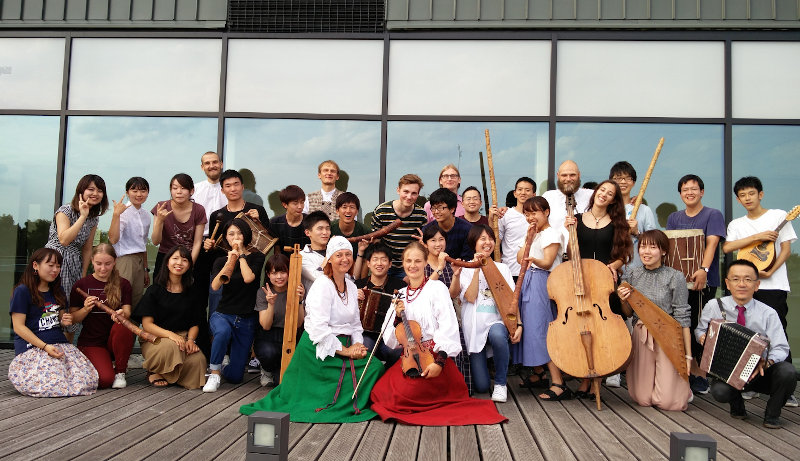
(Hiroshima University students in Vytautas Magnus University, Kaunas; photo by Jonas Petronis)
Japan and Lithuania have more than one possibility to learn about each other not only via culture, books, or international summits; youth exchanges are also developing. These exchanges bring together schools, organizations, and universities and enable them to meet, communicate, and understand each other directly. Lithuanian children, youth, and researchers use various forms of education and research to get familiar with Japan. Also, the Japanese have the same opportunities to learn about Lithuania. During 2019-2021, the pandemic situation reduced the possibility to communicate directly; however, education and science overcome obstacles. This is one of the most significant ways of cooperation between two nations.
School exchange
School exchange between countries starts at a young age. The relationships develop in primary and secondary schools. As a result, we can only be delighted by the schools developing strong relationships and well-prepared programs that enable the little ones to learn more about a different culture.
(Yaotsu school visit; J. Dobkevičius progymnasium)
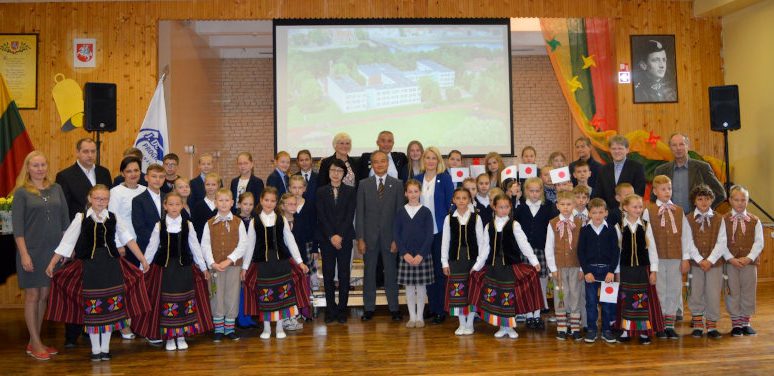
Official exchanges between different schools encourage youth exchanges. The first example could be a cooperation agreement established by Vilnius Užupis Gymnasium and Ritsumeikan Keisho School in 1999. Instances of successful friendships between schools include Panemunė Gymnasium and Hiratsuka Secondary School, Druskininkai Atgimimas School, Gymnasium of Lithuanian University of Health Sciences and Shonan Gakuen, Kaunas Jurgis Dobkevičius Progymnasium and Yaotsu School. Schools receive and send delegations, organize video meetings and conferences enabling them to learn about each other.
There are several Lithuanian schools, where pupils can learn the Japanese language during extracurricular activities or they can study it as a second foreign language.

(J. Dobkevičius progymnasium archive)
The method of Suzuki is based on a unique fundamental principle – every child can learn anything in a perfect, loving, and educating environment. This principle was developed by the Japanese philosopher and teacher Shin'ichi Suzuki (1898-1998). It became popular in all world as an alternative education method. In 1998 Lithuanian Suzuki Association was established, and it developed this method in Lithuania and united teachers and institutions. As a result, many Lithuanian children are educated by Suzuki's method.

(Azija LT archive)
During these contests, Lithuanians learning the Japanese language prepare a public speech in Japanese and deliver it publicly. It is an opportunity for young people to exercise and demonstrate their Japanese language skills. The first contest of this type took place in 2009. Since 2018 these contests are organized annually at the Center for Asian Studies in VMU while cooperating with Komaru Kotsu Foundation and Hiroshima University.

(VMU Centre for Asian Studies archive)
Since 2017, the Lithuanian Children and Youth Center in cooperation with the Embassy of Japan have been organizing a project on Japanese culture Wabi-Sabi in Lithuania. The schools, teachers, and students are encouraged to learn about Japan while creating and revealing the beauty of imperfection through various forms of expression.

The Japanese government implements the program of internships and invites teachers from various countries to spend some time in local Japanese schools. Many Lithuanian teachers participated in these internships and became enthusiastic friends of Japan.

(Kaunas teachers in Hiratsuka; Kauno Pedagogų kvalifikacijos centras archive)
The Japanese sport in Lithuania
Sports is yet another area connecting Japan and Lithuania. The Japanese martial arts are not only a sport – also, it is a value system, which educates and teaches discipline. These arts were popular in Lithuania already during the period of interwar. For instance, the jujitsu technique was an obligatory subject in the Police School of Kaunas (the capital of Lithuania during that period). At the end of the Soviet period, karate clubs were opened in all of Lithuania. During three decades of independent Lithuania, the variety of martial arts grew significantly. In almost all Lithuanian cities, you can find clubs of Japanese martial arts.
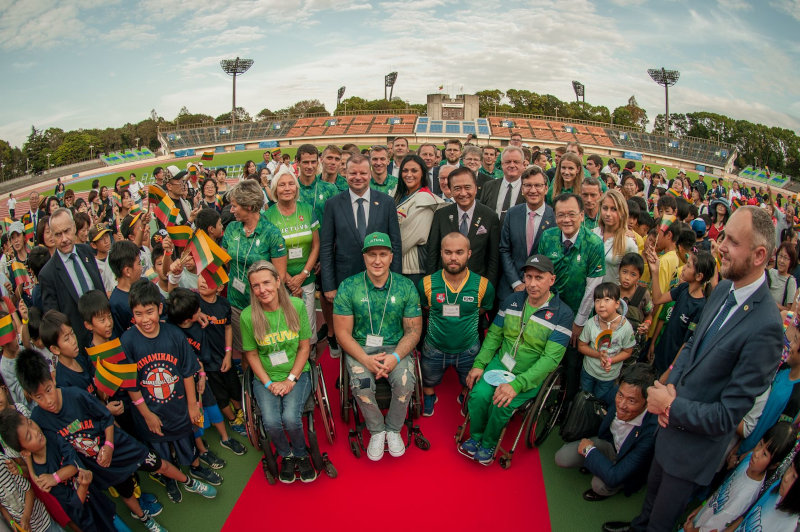
(Lithuanian athletes in Hiratsuka during preparations for 2020 Tokyo Olympics; Office of Lithuanian Government)
In the Japanese language, Karate means “empty hand”. In this art, people do not use any weapons, except the human body. Karate originates from a self-defense system without weapons developed on the island of Okinawa. This martial art became more and more popular; thus, various styles and organizations, including traditional karate, Kyokushin, and Shotokan were established.
Karate in Lithuania was spreading during the last decade of the Soviet period. Several bigger organizations were opened. In 2002, the Lithuanian Traditional Karate Federation promoting the traditional karate style was established. At the same time, the Lithuanian Karate Federation unites clubs representing different karate styles from 2017. The Federation includes approximately 80 clubs, which successfully participate in national and international competitions, European and World Championships. Moreover, camps for children, youth, and adults are organized.
This martial art developed from ancient Japanese jujutsu, and its purpose is personal development via practicing. This is an Olympic sport. Judo clubs in Lithuania were established in the first decade of independence. At the moment, there are approximately a hundred clubs in Lithuania, which are united by two organizations: the Lithuanian Judo Federation and the National Judo Association.
The most famous Lithuanian judoka is Marius Paškevičius, who won a bronze medal in World Championship and two bronze medals in Europe Championship. Also, he represented Lithuania twice in Olympic Games (2000 and 2012).
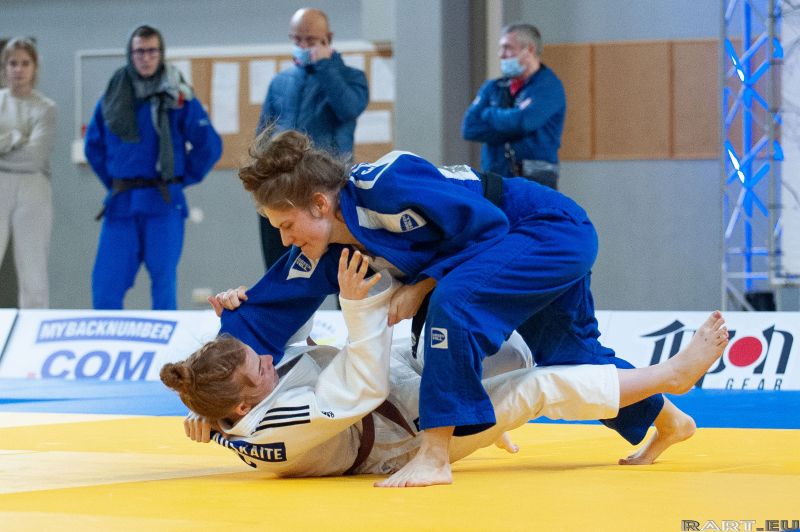
(Lithuanian Judo Federation archive)
Morihei Ueshiba (1883–1969) created a system of physical and spiritual development at the beginning of the 20th century. He incorporated training movements with spear and bayonet into traditions of old martial arts. The main principle of Aikido is to blend with an attackers‘ movements to control their actions with minimal effort. Aikido in Lithuania became popular at the beginning of the 21st century, and the Lithuanian Aikido Aikikai Federation was established in 2004.
It is a way to discipline the human character through the principles of the sword, and it originated from the martial art of samurais in the middle ages. Swords and protecting armors are used in kendo. This is one of the youngest Japanese martial arts in Lithuania – several groups of enthusiasts started to practice kendo in 2005. The growing number and professionalism of interested people and successful debuts in competitions abroad encouraged the establishment of the Lithuanian Kendo Association. In 2006, kendo was recognized as a non-Olympic sport in Lithuania.
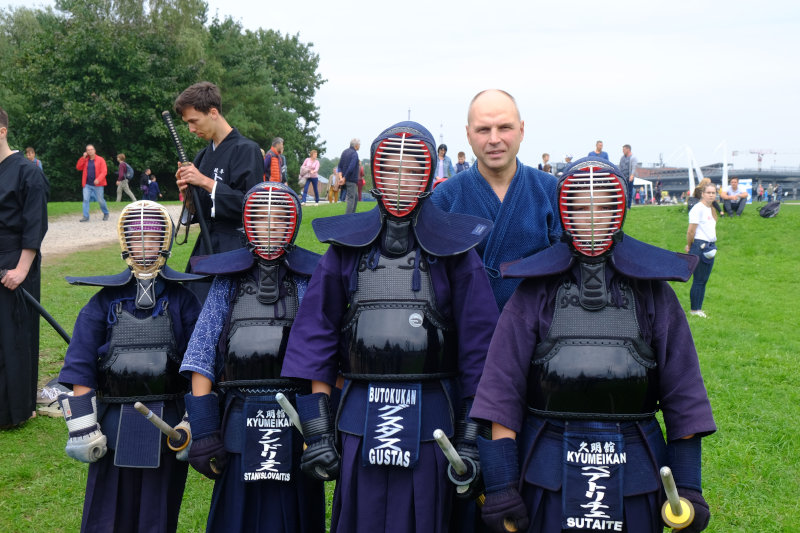
(Lithuanian Kendo Association archive)
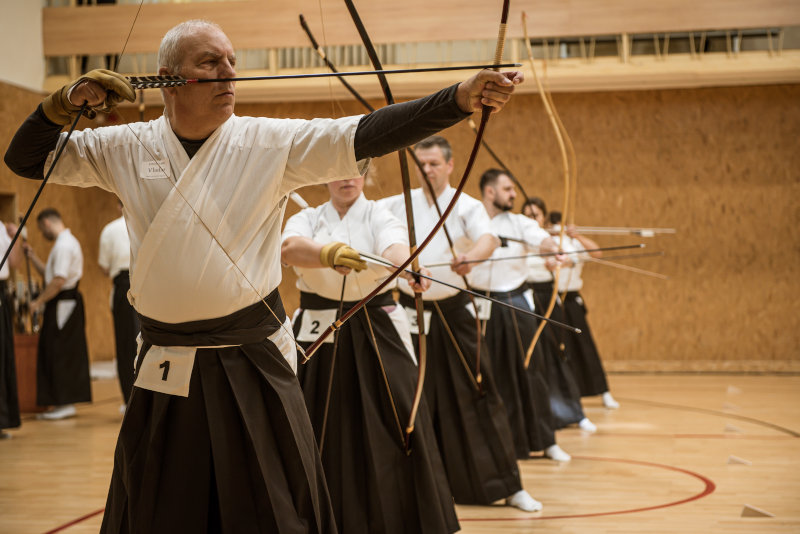
(Lithuanian Kyudo Federation archive)
This Japanese martial art originates from the Japanese art of archery. A bow yumi and shafts ya are used in Kyudo. The attention is concentrated on 8 steps, where not only body position or holding of bow is important. Sight and concentration of an inner peaceful state are of equal importance. This is the youngest Japanese martial art in Lithuania, which emerged in 2009. The Lithuanian Kyudo Federation was established in the same year and, at the moment, it includes approximately 20 members that are continuously practicing this sport. Kyudo Championships are organized annually.
University studies and youth exchanges
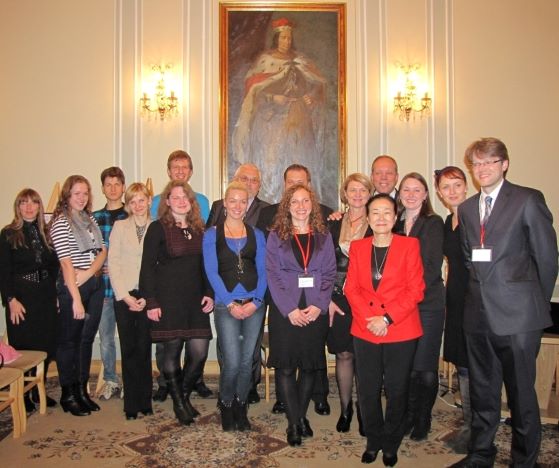
There are great opportunities to learn more about another country at the university level. The Japanese studies are at Vilnius University and Vytautas Magnus University in Lithuania, and Japan is one of the Asian countries, where people can study the Lithuanian language. Due to diverse exchange programs, students, teachers, and researchers have an opportunity to visit each other, participate in conferences, summer schools, cooperate in research. The government of Japan (Monbusho and the Japan Foundation) offers various programs for scholarships and internships.
(establishment of Japan Alumni Association in 2011; Azija LT archive)
Youth from both countries have been participating in the International Youth Exchange Program, funded by the government of Japan since 2006. On the 1st of April 2019, young Japanese and Lithuanian adults gained an opportunity to acquire one-year Working Holiday visas. Unfortunately, the pandemics stopped the program during 2020-2022, though we strongly believe that it will encourage international youth exchange and recognition of different lifestyles.
The Japanese studies in Lithuania
After the restoration of independence, two institutions implemented Japanese studies in Lithuania and offered the possibility to study the Japanese language, history, culture, and society at the university. The Institute of Asian and Transcultural Studies of Vilnius University (the Center of Oriental Studies until 2018) operates the Bachelor Program of Japanese Studies. The Center for Asian Studies (the Japanese Studies Center until 2009) of Vytautas Magnus University offers the Japanese studies as an integral part of the East Asian Cultures and Languages BA program (since 2012) and MA program (since 2007). Also, in the Center of Oriental Studies of Klaipėda University students had the possibility to study the Japanese language and Japanese Culture for a while.
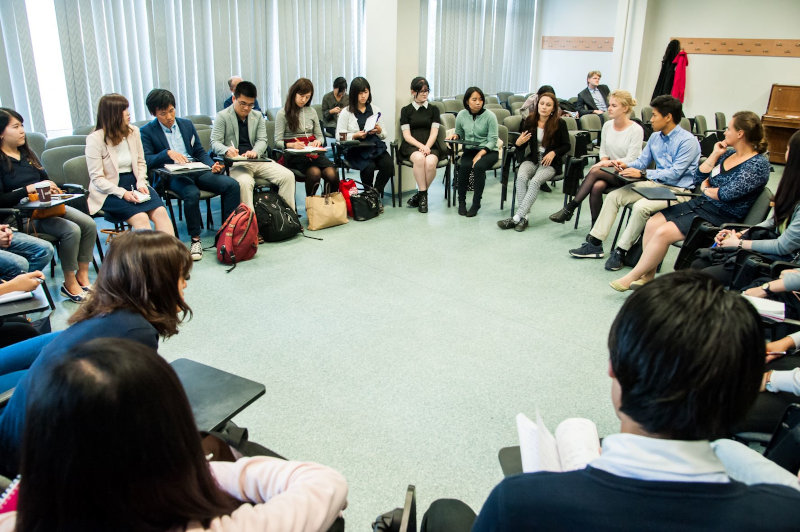
(VMU Centre for Asian Studies archive)
Every year more than 100 students study Japanese language in Lithuania.
The Lithuanian studies in Japan
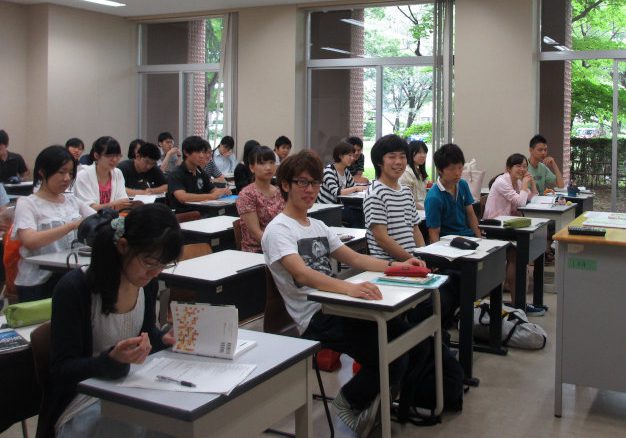
(Lithuanian language students of Tokyo University of Foreign Studies, 2014; photo by E. Sakurai)
Japan is one of the few Asian countries, where students can study the Lithuanian language at university. However, the Lithuanian language is taught as a course as there is no specialization in this language or separate department. Most Lithuanian language learners are students of linguistics interested in an archaic Indo-European language, and they study the Lithuanian language due to scientific interest.
Nagoya University is the first university where people could study the Lithuanian language in Japan. Prof. Michio Yano started teaching the Lithuanian language approximately in 1975, but courses stopped in 2000. The Lithuanian language was taught at Tokyo University for a short time (2009-2010, university teacher Eiko Sakurai), at Kyoto University (2006-2007, university teacher Toshikazu Inoue), and at Kobe Foreign Language Education Academy (2006, university teacher Toshikazu Inoue).
At the moment, Lithuanian language is taught at Osaka University of Foreign Studies (consolidated with Osaka University in 2007) and at Tokyo University of Foreign Studies. Eiko Sakurai is the Lithuanian language professor in both universities.
The Lithuanian language seems difficult to everyone, without exceptions, especially the declension of words is hard to master.
– Eiko Sakurai
Inter-university exchanges
A great part of Lithuanian universities has connections with partners in Japan. The universities implement student exchange programs, mutual scientific projects, and study programs. Often students participate in summer camps and educational programs. A growing number of Lithuanian students, who studied in Japan, resulted in Japan Alumni Association established in 2011. However, these programs are not only an opportunity for Lithuanian youth to get acquainted with Japan. Due to these exchange programs, the Japanese students can learn about Lithuania, and many Lithuanian students became ambassadors of their country.
The leading position in this area belongs to Vytautas Magnus University, which has 19 partner universities in Japan, and Vilnius University. In Japan, the cooperation with Lithuania is actively developed by the universities of Hiroshima, Waseda, Gifu, Saga, and others.
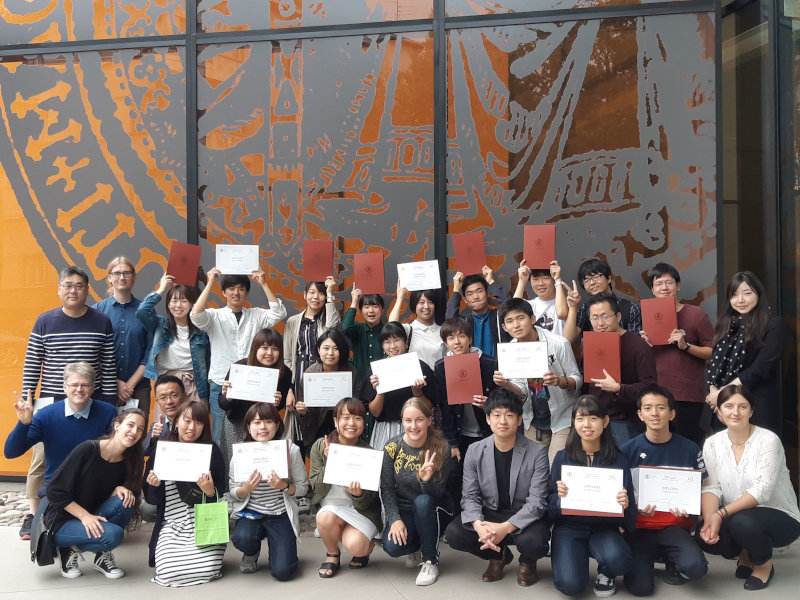
(VMU Centre for Asian Studies archive)
Science, technologies, and innovations
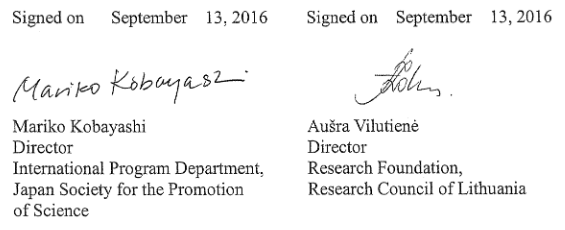
(agreement to encourage research cooperation between Lithuanian and Japan)
In the recent years, the great potential for partnership between Lithuania and Japan is shown in the area of science, technologies, and innovations. The unique ability of Japan to combine respect for traditions and brave and innovative technological solutions encourages Lithuania to learn from good examples. This enables the creation and development of mutual scientific research and, at the same time, the establishment of economic relations.
In this area, Lithuania concluded main agreements with Japan. Cooperation in the area of life sciences is a good example of cooperation development. In 2019, the European Union and Japan agreed upon strengthening connectivity partnerships. This created new opportunities for the development of mutual projects in areas of energy safety and transport infrastructure.
In 2014, the Research Council of Lithuania and the Japan Society for Promotion of Sciences (JSPS) signed a partnership agreement. It encourages strong scientific relations between Lithuanians and Japanese researchers. Both organizations have been organizing calls for projects of scientific research and dissemination since 2017.
Technologies
In May 2011, RIKEN and the Center for Physical Sciences and Technology of the State Scientific Research Institute signed a cooperation agreement. In 2016, MITA joined the cooperation between the EU and Japan in the area of science and technologies and formed EIG CONCERT Japan. Japan Science and Technology Agency is a partner in Japan.
(Y. Himeno lecture in 2014; Japan's Embassy in Lithuania archive)
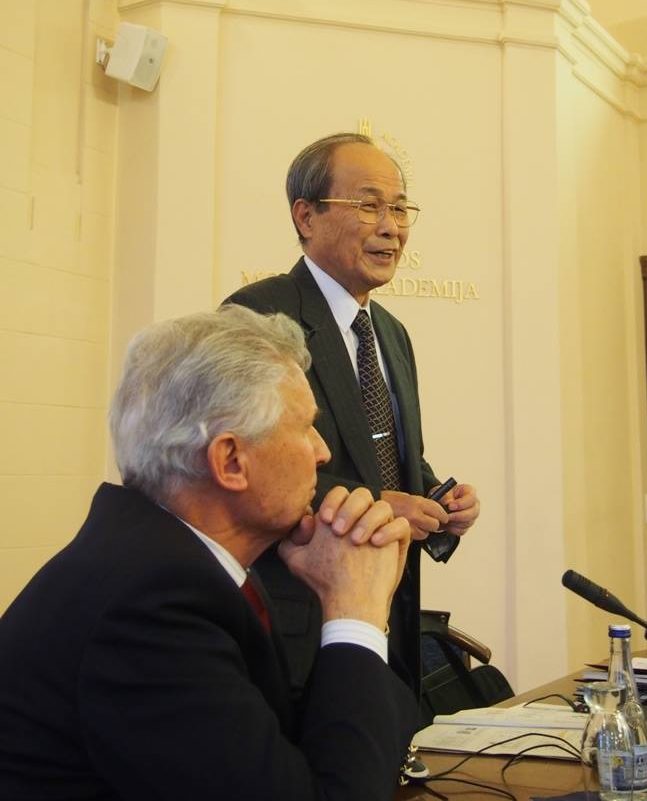
Life sciences
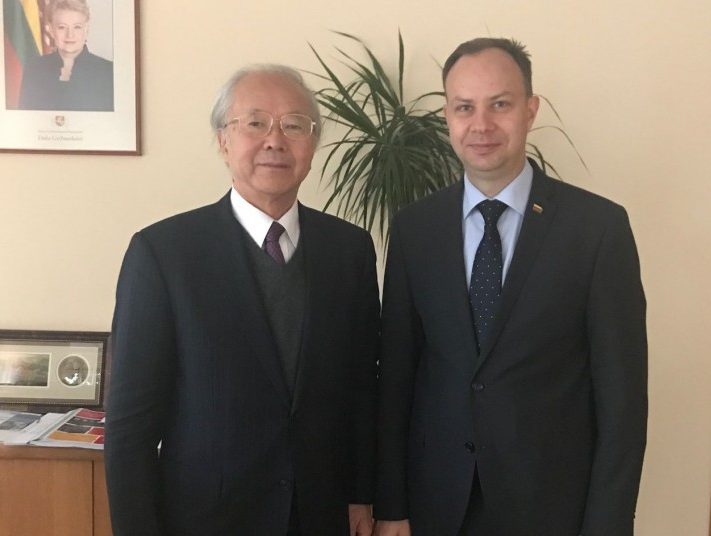
The collaboration of Lithuanian and Japanese universities is exceptionally close in terms of life sciences and health. One of the members of the Research Council of Lithuania is professor Makoto Asashima – a famous expert in research of stem cells and regenerative medicine from Japan. On the 9th of March 2017, a memorandum was signed by the Ministry of Health and the Japan Agency for Medical Research and Development (AMED). This memorandum is significant for the exchange of knowledge and technologies in various areas of biomedicine.
(M. Asashima with A. Veryga in 2017; Ministry of Health of Lithuania archive)
Bibliography
- https://www.delfi.lt/verslas/energetika/japonu-profesorius-apie-ismoktas-pamokas-po-fukusimos-bei-atsinaujinancia-energetika
- https://karatelt.lt/index.html
- http://www.ltka.lt/LTKA_istorija
- https://laaf.lt/
- https://www.lietuvosdziudo.lt/
- https://judo.lt/
- https://lka.kendo.lt/
- https://kyudo.lt/naujienos/
- https://suzukiasociacija.lt/lsa/
